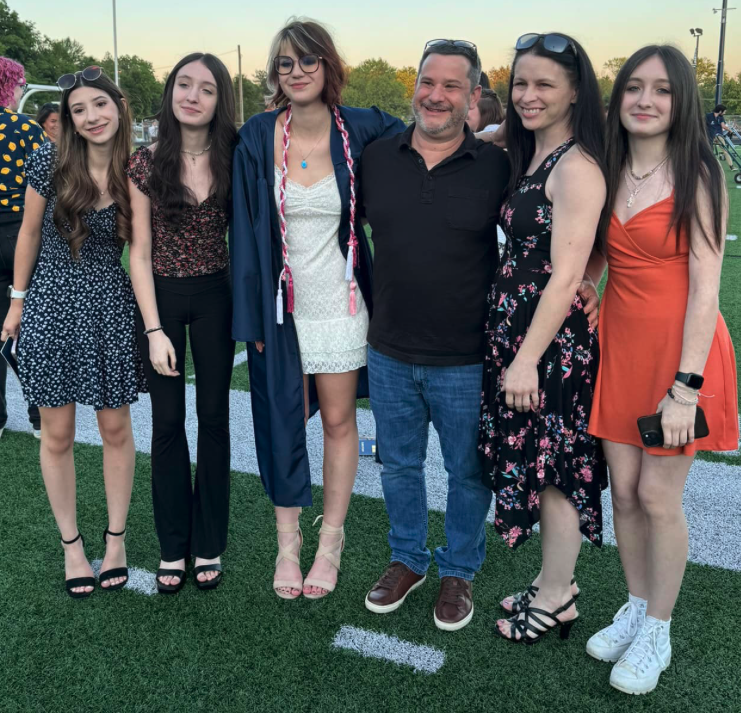I’m in my 40s, with a full-time job that sends me across the country once a month. My wife works just as hard. We have four daughters, one in college, three high school seniors, all applying to schools at once. Our house is full of laughter, comings and goings, late-night essay drafts, and endless group texts. Making music in your 40s is just different.
There’s no quiet studio. No long weekends to “just vibe.” And yet, music still finds its way in.
Not because I schedule it. Not because I force it. But because I’ve learned how to catch it in the margins, those little, unscheduled, unglamorous cracks in the day when creativity shows up and says, “Hey, you got a second?”
1. Redefining Music Time
When I was younger, making music meant disappearing for hours. I’d sit with a guitar or DAW until I lost track of time.
These days, I measure music in minutes. A 15-minute gap between chores. A half hour when the house goes still. A quiet moment on a Sunday evening when no one needs anything.
If I feel something stirring, a melody, a lyric, a beat, I chase it. I don’t worry about finishing a song. I just try to catch the idea before it slips away.
2. Creativity Lives in the Margins
There’s no formal schedule. I don’t block time or set alarms to create. I simply stay open. When I feel something, and when life gives me a moment, I move.
I might record a guitar part into my phone, or open use my notes app to write a line that popped into my head. The trick isn’t having time, it’s being ready when time shows up.
Even if I get the seed of something down, I know I can return to it when the next margin appears.
3. Travel Is a Pause, Not a Studio

I travel for work one week a month, usually out west. And honestly, I don’t try to make music during those weeks. I’m working long hours, visiting with customers, going to dinners, having meetings, and handling family life across time zones.
But that’s okay. Travel is a creative pause, not a block. I use it to reset. I’ll listen to mixes and jot down notes on the projects I’ve been working on. Sometimes I revisit old ideas, scrolling through forgotten voice memos, reading past lyrics, or rewriting something with fresh eyes. I also make a point to listen to new music or dive into other artists’ work. That alone often sparks unexpected inspiration and gets my mind turning in new directions.
By the time I get home, I’m often full of ideas I want to explore.
4. Family Life Fuels the Fire
Our house is never dull. Between college applications, work stress, and everyday life, there’s always something going on. But even with all the noise, my family has come to understand how much music means to me.
My wife supports it because she knows I’m better when I’m creating. My daughters respect it because they’ve grown up seeing it’s part of who I am.
And frankly, they inspire a lot of it. Their energy, their stories, their chaos, it all feeds the creative fire.
5. Small Progress Is Still Progress
There was a time when I judged my creative output harshly. If I didn’t finish a full song or album, it felt like I wasn’t doing enough.
Now I know better. If I captured a riff, a lyric, a tiny beat loop, that’s progress. Those little scraps, over time, turn into songs.
Music in this stage of life is a slow build. But it’s still building.
Final Thoughts
Making music in your 40s doesn’t look anything like it did in your 20s, and it probably shouldn’t. Back then, I had time to waste. Now I’ve got a career, a wife, four daughters sprinting toward adulthood, and more responsibilities than hours in the day.
But the need to create? That hasn’t gone anywhere.
I’ve learned to stop chasing the perfect moment and start paying attention to the quiet ones. Sometimes the spark hits while I’m cleaning up the kitchen. Sometimes it’s at 10:43 p.m. when the house finally goes still. I don’t ignore it—I grab my phone, hum the melody, write the line, drop the idea into a voice note. Because if I don’t capture it, it’s gone. And if I do? I can come back to it later and build something real.
Creativity now isn’t about being prolific; it’s about being present. It’s about staying open enough to recognize when something stirs, even if I only have five minutes to honor it. You don’t need silence or an uninterrupted stretch of hours; the magic’s still there. You have to meet it where it lives and be willing to show up when time makes room.
Look to the margins. That’s where the magic still lives.

